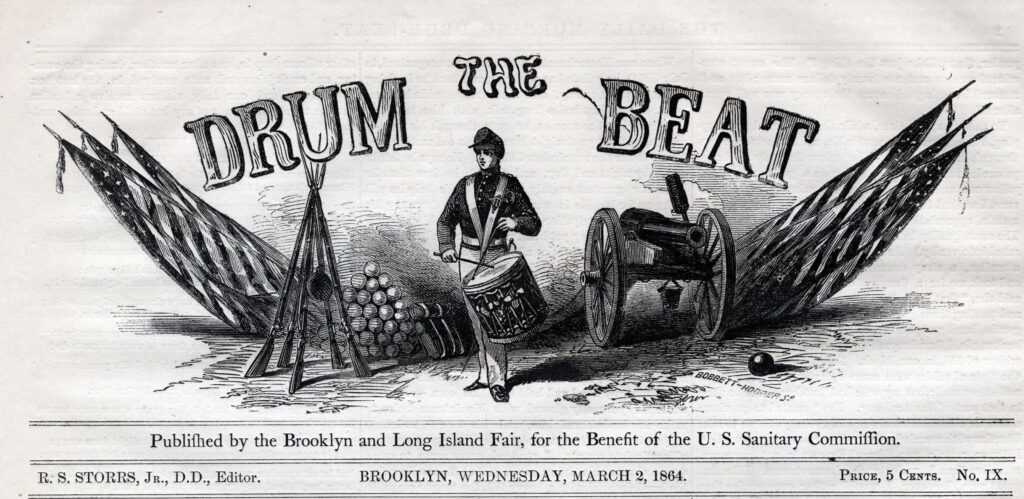 By DeLaynie Holton, Emily Dickinson Museum 2023 Summer Intern
By DeLaynie Holton, Emily Dickinson Museum 2023 Summer Intern
Questions about the publication of Emily Dickinson’s work are among the most common inquiries made by visitors to the museum. During her lifetime, only eleven of her nearly eighteen hundred poems were published. While it is unknown if she wished her writing to ever be published, Dickinson scholars believe that most of the poems published in her lifetime were shared without her direct consent. The majority of these works were printed between 1850 and 1866 in newspapers and magazines such as the Springfield Republican and Drum Beat. In 1878, Helen Hunt Jackson, a celebrated author and correspondent of Dickinson, published “Success is counted sweetest” (Fr 112) in A Masque of Poets, a collection of anonymous writings. After Emily Dickinson’s death in 1886, her sister Lavinia discovered a hidden trove of manuscripts, constituting the majority of Dickinson’s poetry. Her efforts to publish her sister’s work were taken up by other women in the family circle, and the resulting story of sacrifice, uncertainty, conflict, and success is detailed in The Posthumous Discovery of Dickinson’s Poems.
Read below for a list of the few poems published during Dickinson’s lifetime, including poem titles as given by editors, and connections between the publications and the Dickinson family.
“Drum Beat.” American Poetry in the Age of Whitman and Dickinson, October 12, 2009. https://ampoarchive.wordpress.com/2009/10/12/drum-beat/.
Publications in Dickinson’s lifetime:
Letters
1850
Published in The Indicator
A valentine letter published in the February 1850 edition of the Amherst College literary magazine. The letter was sent to Indicator editor George Gould, who likely published it himself.
Learn more about Emily’s first publication: Sir, I Desire an Interview
Poems
1852
Published in Springfield Daily Republican (February 20)
Titled “A Valentine”
The Dickinson family held a subscription to this daily paper, tethering the Homestead to the politics and news of the region and world. Two of the editors, Samuel Bowles and J.G. Holland, were family friends of the Dickinsons.
1858
First published Springfield Daily Republican (August 2)
Titled “To Mrs –, with a Rose.”
As with most of Emily’s published works, the manuscript source for publication was lost. Scholars speculate about which of Dickinson’s correspondents sent their copy to the paper.
Emily Dickinson, and Ralph W. Franklin, The Poems of Emily Dickinson: Variorum Edition (Cambridge, MA: The Belknap Press of Harvard University Press, 1998), 66 and 67.
1861
First published Springfield Daily Republican (May 4)
Titled “The May-Wine”
| Republican | Fascicle |
| 3 Not Frankfort berries yield the sense | Not all the Frankfort Berries• |
| [Not all the] Vats opon the Rhine | |
| 4 Such a delirious whirl | Yield such an Alcohol |
| 16 Come staggering toward the sun | From Manzanilla come • |
| Leaning against the sun | |
It is unknown if the variations between the printed version and the fascicle version are Emily’s own or are editorial decisions made at the Republican.
Emily Dickinson, and Ralph W. Franklin, 207
1862
First published in Springfield Daily Republican (March 1)
Titled “The Sleeping”
It is thought that Susan Dickinson was the source for this publication, as she likely used the now-lost manuscript to edit her copy of Poems (1890) after its publication. She marked out an editorial addition “[of sunshine]” to the 7th line “in her castle [of sunshine] above them”–likely to match her copy and the one published in the Republican.
Emily Dickinson, and Ralph W. Franklin, 160.
1864
First published in Drum Beat, Brooklyn, NY (February 29)
Titled “Sunset”
Drum Beat was a newspaper published by the Brooklyn and Long Island Fair in order to benefit the U.S. Sanitary Commission during the Civil War. There were 14 issues published between February 22nd to March 11th, 1864. The editor, Richard Salter Storrs Jr., was connected with the Dickinson family through Amherst College, where he attended as a member of the class of 1839.
- “Flowers-Well- if anybody” (Fr95)
First published in Drum Beat, Brooklyn, NY (March 2)
Titled “Flowers”
A copy of this poem is recorded in Fascicle 4 likely around 1859.
First published in Drum Beat, Brooklyn, NY (March 11)
Titled “October”
Dickinson likely sent a copy to Susan in 1859. This copy, with an erased “Sue” as the address, eventually made its way to Mabel Loomis Todd from the Bowles family, forwarded through Austin Dickinson.
Emily Dickinson, and Ralph W. Franklin, 155.
First published in Round Table, New York (March 12)
Titled “My Sabbath”
Round Table was a paper founded by former editor of the Brooklyn Daily Union, Charles Sweetser. Sweetser was a member of the Amherst College class of 1862, and his family was friends with the Dickinsons.
- “Success is counted sweetest” (Fr112)
First published in Brooklyn Daily Union (April 27, untitled)
The Brooklyn Daily Union was edited by Charles Sweetser, graduate of Amherst College in 1862 and friend of Emily Fowler Ford, who corresponded with Dickinson. The Drum Beat and the Brooklyn Daily Union shared the same press and office space.
Published in A Masque of Poets in 1878 (Boston: Roberts Bros.). Only known publication in a book, submitted at the urging of Emily’s friend, author Helen Hunt Jackson.
1866
- “A narrow Fellow in the Grass” (Fr1096)
First published in Springfield Daily Republican (February 14)
Titled “The Snake”
Emily was displeased with the editing and publishing of this poem. She wrote to Thomas Wentworth Higginson on March 17th, “Lest you meet my Snake and suppose I deceive it was robbed of me – defeated too of the third line by punctuation. The third and fourth were one – I told you I did not print – I feared you might think me ostensible.” Here, she displays her views on the unconsulted printing of her work and the weighted changes made by editors.
Emily Dickinson, and Ralph W. Franklin, 952.